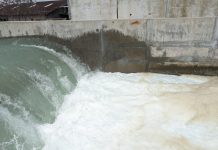Seaweed farming is rapidly gaining momentum across India’s extensive coastline, transforming coastal livelihoods and offering a sustainable path forward for both the economy and the environment. Once a niche activity, it is now being embraced by more coastal communities as marine scientists and government bodies promote it as a win-win solution for income generation and ecological restoration.
Unlocking Business Potential in a Growing Global Market
Dr. Grinson George, Director of the ICAR-Central Marine Fisheries Research Institute (CMFRI), stated, “With rising global demand and proven ecological benefits, seaweed farming is a great opportunity,” he said. “The global seaweed market, valued at $16.5 billion in 2022, presents a promising avenue for India to leverage its long coastline for growth.”
CMFRI has pioneered Integrated Multi-Trophic Aquaculture (IMTA) methods that combine seaweed cultivation with sea cage fish farming. This approach boosts both productivity and profitability, with seaweed varieties like Kappaphycus showing high returns when grown in integrated systems.
“Blue Gold”: Livelihoods and Ocean Conservation
Dr. George aptly calls seaweed farming “Blue Gold”, highlighting its role in providing stable incomes and easing the pressure on marine ecosystems caused by traditional fishing. He advocates for the formation of Fish Farmer Producer Companies (FFPCs) to improve market access, ensure fair pricing, and empower coastal farmers.
Seaweed’s versatility also opens doors in industries such as food, cosmetics, pharmaceuticals, and nutraceuticals. CMFRI’s research has revealed the potential of Indian seaweed species to develop natural health supplements, meeting the demand for sustainable wellness products.
A Climate Ally Beneath the Waves
Beyond its economic benefits, seaweed offers significant environmental advantages. It absorbs carbon dioxide and reduces methane emissions, making it a powerful ally in the fight against climate change. By restoring underwater ecosystems and reducing nutrient pollution, seaweed farming promotes healthier oceans and biodiversity.
Scaling Up: What the Industry Needs Next
To truly unlock the potential of seaweed farming, India must create an enabling ecosystem. Dr. George highlights the importance of:
- Robust coastal leasing policies to attract private and public investment
- A comprehensive mariculture framework to streamline operations
- Establishing seed banks and micro-propagation centers for consistent seedling supply
- Investing in research and development to improve crop varieties and farming techniques
- Expanding into offshore farming for greater scale
- Strengthening supply chains and promoting value-added seaweed products
A Sustainable Future for Coastal India
With the right support from policymakers, researchers, and industry stakeholders, seaweed farming can become a cornerstone of India’s blue economy. As reported by agrinews.in, it offers a rare blend of income generation, climate action, and marine conservation. This paves the way for a sustainable and inclusive future along the nation’s shores.

































